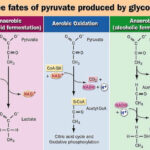AS and A Level Biology 74 Views 1 Answers
Sourav PanLv 9October 28, 2024
Investigate the progress of enzyme-catalysed reactions by measuring rates of formation of products using catalase and rates of disappearance of substrate using amylase
Investigate the progress of enzyme-catalysed reactions by measuring rates of formation of products using catalase and rates of disappearance of substrate using amylase
Please login to save the post
7
Please login to submit an answer.
Sourav PanLv 9May 15, 2025
Investigation: Progress of Enzyme-Catalysed Reactions
Reactions Under Investigation:
- Catalase-Catalysed Reaction:
- Reaction: 2H₂O₂ (Hydrogen Peroxide) → 2H₂O (Water) + O₂ (Oxygen)
- Measured: Rate of Formation of Product (O₂)
- Amylase-Catalysed Reaction:
- Reaction: Starch (or Amylose) → Maltose (and eventually Glucose)
- Measured: Rate of Disappearance of Substrate (Starch)
Experimental Design:
Catalase-Catalysed Reaction (O₂ Formation)
- Materials:
- Catalase solution
- Hydrogen peroxide (H₂O₂)
- Gas syringe or oxygen sensor
- Procedure:
- Prepare several identical reactions with catalase and H₂O₂.
- Initiate each reaction at timed intervals (e.g., every 2 minutes).
- Measure the volume of O₂ produced (using a gas syringe) or the concentration of O₂ (using an oxygen sensor) at fixed time points (e.g., every 1 minute) after initiating each reaction.
- Plot the volume/concentration of O₂ vs. time for each reaction start time to observe the rate of product formation over time.
- Data Analysis:
- Calculate the initial rate of reaction (rate of O₂ formation) for each reaction using the linear portion of the plot.
- Compare the initial rates among the reactions to assess the consistency of the catalase activity.
Amylase-Catalysed Reaction (Starch Disappearance)
- Materials:
- Amylase solution
- Starch solution
- Iodine solution (for starch detection)
- Procedure:
- Prepare several identical reactions with amylase and starch.
- Initiate each reaction at timed intervals (e.g., every 2 minutes).
- At fixed time points (e.g., every 1 minute) after initiating each reaction, withdraw a sample and add iodine solution.
- Measure the absorbance (using a spectrophotometer) or color intensity (visually or with a colorimeter) of the resulting solution, which correlates with the remaining starch concentration.
- Plot the absorbance/color intensity (proportional to starch concentration) vs. time for each reaction start time to observe the rate of substrate disappearance over time.
- Data Analysis:
- Calculate the initial rate of reaction (rate of starch disappearance) for each reaction using the linear portion of the plot.
- Compare the initial rates among the reactions to evaluate the consistency of the amylase activity.
Expected Outcomes and Interpretations:
- Catalase Reaction:
- Plot: Volume/Concentration of O₂ vs. Time will show a rapid increase in O₂ production initially, followed by a plateau as H₂O₂ is depleted.
- Initial Rate Analysis: Consistent initial rates among reactions indicate reliable catalase activity.
- Amylase Reaction:
- Plot: Absorbance/Color Intensity (proportional to Starch Concentration) vs. Time will decrease over time, indicating starch breakdown.
- Initial Rate Analysis: Similar initial rates across reactions suggest consistent amylase activity.
Factors Influencing Rates (Variables to Consider for Future Investigations):
- Enzyme Concentration: How does varying the amount of catalase or amylase affect the reaction rates?
- Substrate Concentration: What impact does changing the initial H₂O₂ or starch concentration have on the reaction rates?
- Temperature and pH: How do variations in temperature and pH affect the activity of catalase and amylase, and consequently, the reaction rates?
0
0 likes
- Share on Facebook
- Share on Twitter
- Share on LinkedIn
0 found this helpful out of 0 votes
Helpful: 0%
Helpful: 0%
Was this page helpful?




